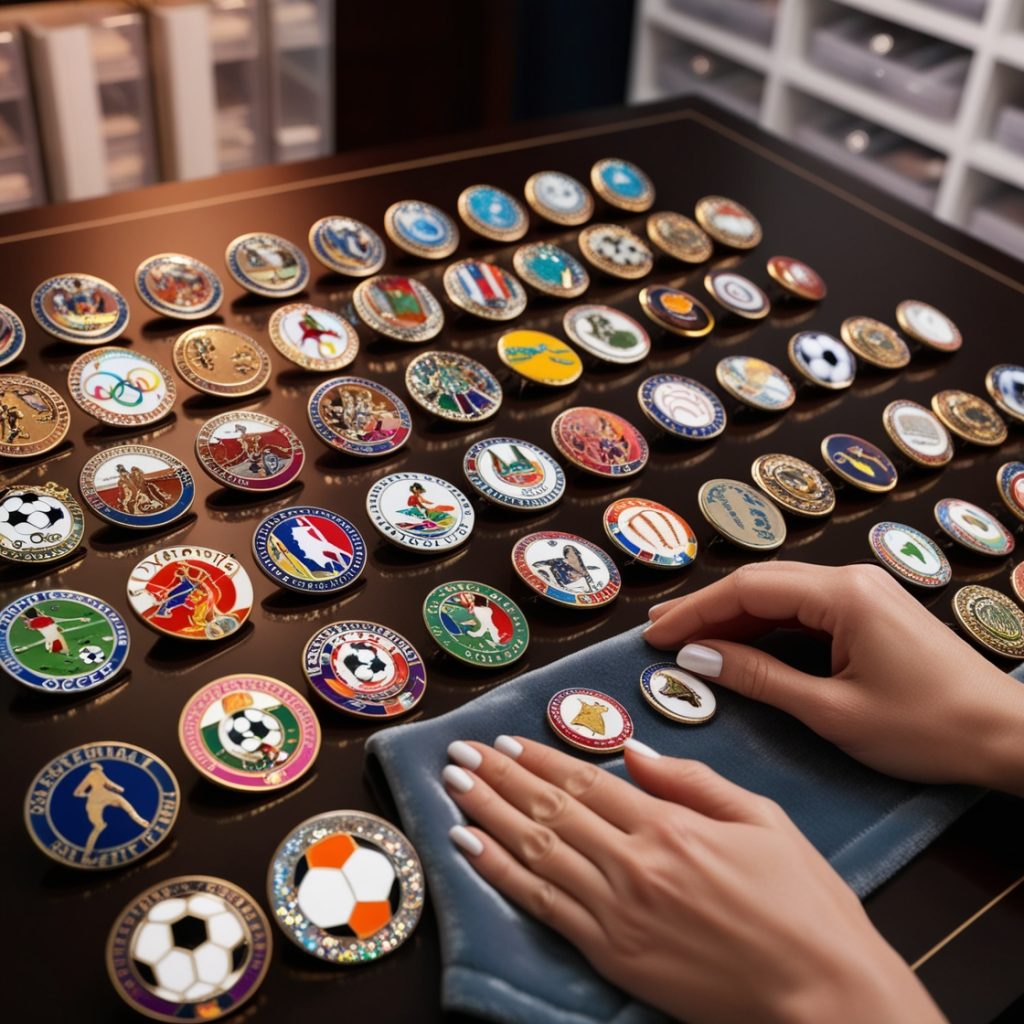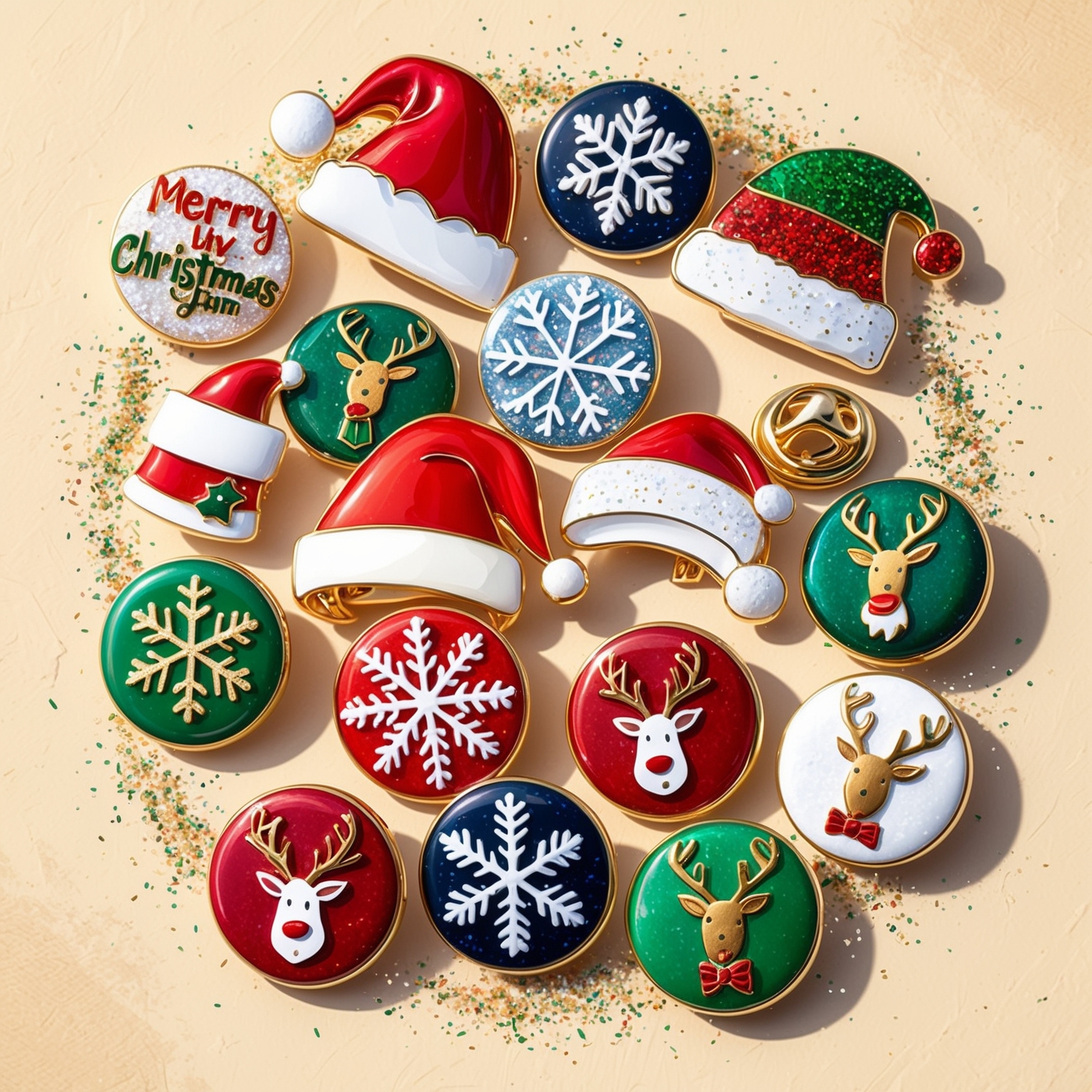Sports trading pins have become a major part of the culture surrounding competitive events. From Little League Baseball to the Olympics, these small yet significant pieces of memorabilia have captured the attention of fans, players, and collectors worldwide. Trading pins represent more than just a love for the game; they symbolize team spirit, commemorate key events, and serve as a way to build connections between players, fans, and collectors.
But why have sports trading pins gained such popularity? And how do you get started with collecting, designing, or trading these sought-after pieces of sports history? Whether you’re new to the world of sports trading pins or a seasoned collector looking to expand your knowledge, this ultimate guide will walk you through everything you need to know—from the history of sports pins to the best tips for growing your collection.
Let’s dive into the world of sports trading pins and discover what makes this hobby such a thrilling game of its own.
The History of Sports Trading Pins
The origins of sports trading pins can be traced back over a century. Lapel pins were initially used in the late 1800s as a way for military personnel to identify their rank and affiliation. It wasn’t long before the use of pins expanded into other areas, including sports, where they became a fun way to show support for teams and events.
Early Days in the Olympics
The tradition of trading pins in the sports world took off during the 1896 Olympic Games in Athens, where athletes and officials wore small lapel pins to identify their teams and roles. These pins quickly became a coveted collectible among athletes, sparking the birth of Olympic pin trading. By the 1924 Winter Olympics in Chamonix, France, pin trading had become a popular pastime, with participants exchanging pins as a symbol of camaraderie and mutual respect.
Today, Olympic pin trading is an established tradition, with thousands of unique pins produced for each set of Games. Athletes, officials, and fans all participate in this ritual, often planning their pin trades well in advance.
Expansion to Other Sports
While Olympic pins may have been the original trading items, the concept soon spread to other sports. In the United States, sports trading pins became particularly popular in youth baseball leagues during the 1980s. Teams from different regions would gather at tournaments, and players would trade pins with members of other teams as a way of building friendships and showing team pride.
Today, the practice of trading sports pins is widespread in sports like hockey, soccer, basketball, and even cheerleading. Youth leagues, high school teams, and even professional sports organizations have embraced the pin trading culture, offering unique designs for each season or event.
Why Collect Sports Trading Pins?
Collecting sports trading pins is more than just a hobby—it’s a way to engage with the sports you love on a deeper level. There are many reasons why people choose to collect sports pins, from the emotional connection to the game to the excitement of finding rare and valuable pins.
1. Commemorating Special Events
One of the most compelling reasons people collect sports trading pins is to commemorate specific sporting events. From local tournaments to national championships, pins serve as lasting souvenirs that celebrate participation and success. Collectors often seek out pins from key events in their favorite sports or look for pins that mark historic achievements, such as championship wins or record-breaking performances.
For example, fans of Major League Baseball may collect pins commemorating World Series games, while soccer enthusiasts might seek out pins from the FIFA World Cup. These pins serve as mementos that evoke memories of thrilling games, favorite players, and personal experiences at the event.
2. Team Pride and Spirit
For players and fans alike, sports trading pins are a fun way to show off team pride. Whether it’s a pin featuring a team’s logo, mascot, or colors, wearing and trading these pins allows individuals to represent their teams both on and off the field. Team pins are often designed to capture the essence of a season, incorporating slogans, unique artwork, or symbols that define the team’s journey.
For youth teams, trading pins with other teams at tournaments helps foster friendships and create a sense of camaraderie. Even after the game is over, players can look back at their pin collection as a reminder of the fun, friendships, and achievements they experienced with their team.
3. Building Connections and Community
One of the unique aspects of sports trading pins is the social element. Pin trading events bring together collectors, fans, and players from all over the world, creating an atmosphere of shared passion and excitement. Trading sports pins becomes a social activity, with collectors exchanging stories, building friendships, and engaging in friendly competition to find rare and coveted pins.
At large sporting events such as the Olympics or the Little League World Series, pin trading areas are set up where participants can meet, swap pins, and share their love for the game. These interactions make pin trading more than just a hobby—it becomes a community-driven experience.
4. The Thrill of the Hunt
For many collectors, the hunt for rare and valuable pins is one of the most exciting aspects of the hobby. Some pins are produced in limited quantities or distributed only to specific teams, making them hard to find and highly sought after. Collectors take great pride in tracking down rare pins to complete their collections, often trading with other collectors or searching online marketplaces for hard-to-find items.
Limited-edition pins, commemorative event pins, and error pins (pins with design mistakes or misprints) can become particularly valuable over time. The pursuit of these rare pins adds an element of challenge and excitement to the hobby, turning it into a game of its own.
How to Get Started with Collecting Sports Trading Pins
Starting your own sports trading pins collection doesn’t require a large investment or expert knowledge—just a passion for the game and a little creativity. Here’s how you can get started with collecting and trading sports pins.
1. Choose a Focus for Your Collection
One of the first steps in starting a collection is deciding what type of sports trading pins you want to focus on. With so many options available, it’s helpful to narrow down your interests to create a more meaningful and organized collection. Consider the following options:
- Sport-Specific Pins: Focus on collecting pins from a particular sport, such as baseball, soccer, or hockey. This allows you to build a themed collection around the sport you love most.
- Event-Based Pins: Collect pins from major sporting events, like the Olympics, World Cup, or national championships. Event-based collections can become a timeline of historic sporting moments.
- Team Pins: Collect pins from your favorite teams, whether they’re professional sports teams, youth leagues, or high school teams. This type of collection is great for showing team loyalty and support.
- Player or Athlete Pins: Some collectors focus on pins that feature specific players or athletes. For example, a fan of a particular baseball player might seek out every pin that represents that player’s career milestones.
By choosing a focus, you’ll have a clear direction for your collection and a better understanding of which pins to seek out.
2. Learn the Basics of Pin Trading
Once you’ve started collecting, it’s time to dive into the world of pin trading. Trading is one of the most enjoyable aspects of the hobby, offering opportunities to meet fellow collectors, find rare pins, and expand your collection. Here are a few basic pin trading rules to get you started:
- Bring Your Own Pins: To trade, you’ll need pins to exchange. Many collectors create duplicates of popular pins to trade with others, while keeping rarer pins for their personal collection.
- Equal Trades: In most pin trading scenarios, collectors try to trade pins of equal value. This ensures fairness and keeps the trading experience enjoyable for everyone involved. For example, trading a common team logo pin for a limited-edition event pin might not be considered a fair trade.
- Respect Fellow Traders: Pin trading should be a positive experience, so always be respectful to others. If someone isn’t interested in a trade or has certain rules for their collection, it’s important to respect their preferences.
Understanding the Different Types of Sports Trading Pins
Not all sports trading pins are created equal. In fact, there are several different types of pins, each with its own style, function, and level of collectibility. Whether you’re trading or collecting, it’s essential to know the differences between the types of pins you’re likely to encounter.
1. Soft Enamel Pins
Soft enamel pins are the most common type of sports trading pin. These pins are made by filling recessed areas of the pin design with colored enamel, which creates a textured surface. The raised metal lines give soft enamel pins a distinct, tactile feel, making them popular for colorful, intricate designs.
2. Hard Enamel Pins
Hard enamel pins have a smooth, polished finish. Instead of leaving the enamel recessed, the enamel is layered and polished until it is flush with the metal edges of the design. Hard enamel pins are known for their durability and high-quality finish, making them a popular choice for commemorative and limited-edition pins.
3. Offset Printed Pins
Offset printed pins are created using a printing process that allows for highly detailed designs, including photographs, gradients, and complex patterns. The design is printed directly onto the pin’s surface, allowing for more intricate artwork than traditional enamel pins. Offset printed pins are commonly used for sports trading pins that feature event logos, mascots, or team photos.
4. Glitter Pins
For an extra touch of flair, some sports trading pins are designed with glitter enamel. These pins add sparkle to the design, making them stand out in a collection. Glitter pins are often used for special events, such as tournaments or championship games, where the design needs to make a bold statement.
5. Danglers, Sliders, and Spinners
To add an interactive element to sports trading pins, some pins are designed with additional moving parts. These include:
- Danglers: Small attachments that hang from the bottom of the main pin, adding extra movement to the design.
- Sliders: Pins with moving pieces that slide back and forth within the design, such as a soccer ball moving across the field.
- Spinners: Pins with a rotating element that spins, such as a spinning basketball or wheel.
These interactive pins are highly popular among collectors due to their unique designs and added functionality.
Tips for Designing Your Own Sports Trading Pins
One of the most exciting aspects of sports trading pins is the ability to design your own. Whether you’re creating pins for a sports team, tournament, or fan club, designing custom pins allows you to express your creativity and build team spirit. Here are some tips for designing the perfect sports trading pin.
1. Incorporate Team Colors and Logos
When designing sports trading pins, the team’s identity should be front and center. Incorporate team colors, logos, mascots, and slogans to ensure that the pin represents the team’s spirit and pride. These elements make the pin instantly recognizable and meaningful to players and fans alike.
2. Highlight Special Achievements
If the pin is being created to commemorate a specific achievement, such as winning a championship or participating in a major tournament, make sure to highlight that in the design. Including the name of the event, the year, or a specific slogan can make the pin more memorable and valuable to collectors.
3. Add Special Effects
Consider using special effects like glitter enamel, glow-in-the-dark paint, or metallic finishes to make your pins stand out. Special effects can add a unique touch to the design and help the pin attract more attention during trading events.
Storing and Displaying Your Sports Trading Pins
As your collection of sports trading pins grows, you’ll need a way to store and display them. Proper storage ensures that your pins remain in good condition, while displaying them allows you to showcase your collection to others.
1. Pin Trading Books and Cases
Pin trading books and cases are popular options for storing and organizing pins. These books feature soft felt or foam pages where you can easily attach your pins and keep them protected. They’re also portable, making them ideal for taking to pin trading events.
2. Display Boards
For collectors who want to show off their pins at home, display boards offer a visually appealing way to exhibit your collection. These boards come in various sizes and materials, such as cork, foam, or fabric, and can be mounted on a wall to create a custom pin display. Display boards are especially popular for showcasing themed collections or rare pins.
3. Shadow Boxes
Shadow boxes provide a more formal way to display sports trading pins. These framed cases have a glass cover and enough depth to safely display pins without exposing them to dust or damage. Shadow boxes are great for displaying valuable or rare pins and make an excellent addition to a home or office.
Mastering the Art of Collecting Sports Trading Pins
Collecting sports trading pins is a rewarding hobby that combines passion for sports with creativity, history, and social interaction. Whether you’re drawn to the unique designs, the sense of community, or the thrill of trading rare pins, this hobby offers endless opportunities for fun and discovery.
As you start or grow your collection, remember to focus on the aspects of pin trading that bring you the most joy. Whether it’s designing your own pins, finding rare collectibles, or meeting fellow sports fans at trading events, the world of sports trading pins is full of exciting possibilities.
So, start building your collection, get out there and trade, and most importantly—enjoy the game!
If you are interested in ordering some high-quality lapel pins, feel free to call us at our Toll free number 1-877-513-4811 or fill out one of our FREE QUOTE FORMS.



